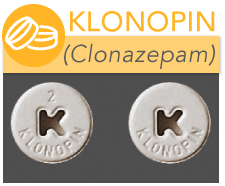
Addiction and Substance Use Disorders (SUDs) can develop with prolonged use and/or abuse of prescription sedatives such as benzodiazpines, barbitutes, and non-benodiazepines (Z Drugs). In addition to helping a person sleep, these medications are prescribed to treat anxiety, seizures, muscle spasms and more. Benzodiazepines such as Xanax (alprazolam) are bought and sold on the black market contributing to the rise of drug related deaths in the United States.
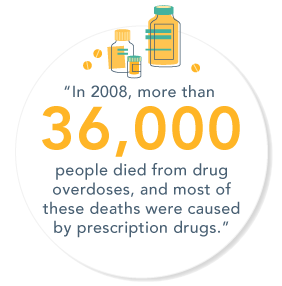 Prescription sedatives are used in medicine to help a person more comfortably deal with insomnia, anxiety, epilepsy, pain, hyperactive disorders, attention disorders, and other mental disorders. Even if a person is using the recommended dosage of a prescribed sedative, they may be at a great risk of becoming addicted. Misuse of sedatives is usually a result of euphoria that it brings them, but abusing drugs can lead to trouble. According to the U.S. Department of Health and Human Services, “repeated use (of a sedative) can lead to addiction, overdose, and death.”
Prescription sedatives are used in medicine to help a person more comfortably deal with insomnia, anxiety, epilepsy, pain, hyperactive disorders, attention disorders, and other mental disorders. Even if a person is using the recommended dosage of a prescribed sedative, they may be at a great risk of becoming addicted. Misuse of sedatives is usually a result of euphoria that it brings them, but abusing drugs can lead to trouble. According to the U.S. Department of Health and Human Services, “repeated use (of a sedative) can lead to addiction, overdose, and death.”
What Are Prescription Sedatives?
Sedatives are drugs which can have several different effects on the user, but the main purpose is to depress the central nervous system and maintain sleep; alcohol can also be considered a sedative, though it is not typically prescribed, consumption can be advised. The two most common types of sedatives prescribed in the United States are Benzodiazepines and Barbiturates.
Benzodiazepines are typically prescribed for anxiety, seizures, insomnia, and panic attacks. Somebody might abuse these kind of sedatives because of the calming effect that they have.
Barbiturates are less commonly prescribed than Benzodiazepines, but can be used for anxiety, insomnia, seizures, and panic attacks, and can still be found in some hospitals and veterinarians.
Non Benzodiazepines (Z Drugs) are in the same family as Benzodiazepines, but work faster and don’t alter the sleep patterns as greatly.
Though, to date, there are a combined total of more than 20 different Benzodiazepines, Non Benzodiazepines, and Barbiturates prescribed, some of the more common sedatives are listed below:
Benzodiazepines
Barbiturates
- Amytal
- Alurate
- Butisol
- Mebaral
- Brevital
- Nembutal
- Luminal
- Mysoline
- Seconal
- Penothal
Nonbenzodiazepine (Z Drugs)
- Lunesta
- Sonata
- Ambien
- Zimovane
Some of these prescription drugs are more addictive than others. Each of them can be abused by taking them for something other than what is recommended by a doctor, by continuing to take the drug when it is no longer needed, or by taking the drug when it isn’t prescribed. Some people will continue using the drug until the problem becomes so bad that intervention becomes necessary.
Risks Of Taking Xanax (Alprazolam)
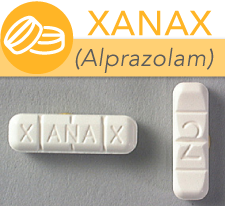 Xanax( or Alprazolam) is used for treating anxiety and panic disorders, it is effective in slowing down abnormal brain activity. It can also be used for depression, agoraphobia, and premenstrual symptoms. Xanax can be a habit forming drug, especially when it is taken in larger than the suggested dose, or when dosage is continued further than what is suggested by a doctor. When a person stops using Xanax they might experience withdrawals and symptoms like irritability, aggressiveness, diarrhea, decrease in appetite, weight loss, shakiness, and seizures.
Xanax( or Alprazolam) is used for treating anxiety and panic disorders, it is effective in slowing down abnormal brain activity. It can also be used for depression, agoraphobia, and premenstrual symptoms. Xanax can be a habit forming drug, especially when it is taken in larger than the suggested dose, or when dosage is continued further than what is suggested by a doctor. When a person stops using Xanax they might experience withdrawals and symptoms like irritability, aggressiveness, diarrhea, decrease in appetite, weight loss, shakiness, and seizures.
Risks Of Taking Valium (Diazapam)
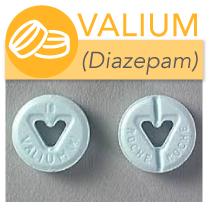 Valium (or Diazapam) is used used for treatment of anxiety, seizures, muscle spasms, and can also be used to treat a patient who is experiencing alcohol withdrawals. A person who abuses Valium will likely build up a tolerance to the drug, and can become dependent on it. A person who is dependent on the drug Valium can experience terrible withdrawal symptoms when the drug is no longer available. Withdrawals can consist of worsening conditions and lead to panic attacks, insomnia, and aggressiveness.
Valium (or Diazapam) is used used for treatment of anxiety, seizures, muscle spasms, and can also be used to treat a patient who is experiencing alcohol withdrawals. A person who abuses Valium will likely build up a tolerance to the drug, and can become dependent on it. A person who is dependent on the drug Valium can experience terrible withdrawal symptoms when the drug is no longer available. Withdrawals can consist of worsening conditions and lead to panic attacks, insomnia, and aggressiveness.
Risks Of Taking Ambien (Zolpidem)
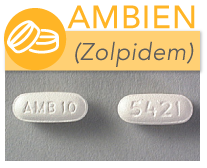 Ambien (Zolpidem) is used to slow down brain activity to help a person sleep. A person should not take Ambien for longer than two weeks, because it can also be habit forming. Some people abuse Ambien, by taking large doses or using the drug for something other than treating a medical condition. Ambien and other sedatives like it can cause hallucination-like feelings for person abusing the drug.
Ambien (Zolpidem) is used to slow down brain activity to help a person sleep. A person should not take Ambien for longer than two weeks, because it can also be habit forming. Some people abuse Ambien, by taking large doses or using the drug for something other than treating a medical condition. Ambien and other sedatives like it can cause hallucination-like feelings for person abusing the drug.
Withdrawals have been related to ceasing to take Ambien abruptly– “shakiness, lightheadedness, stomach and muscle cramps, nausea, vomiting, sweating, flushing, tiredness, uncontrollable crying, nervousness, panic attack, difficulty falling asleep or staying asleep, uncontrollable shaking of a part of your body, and rarely, seizures.” (U.S. Library of Medicine)
Risks Of Taking Klonopin (Clonazepam)
Klonopin is used to help a person who has seizures, but can also be seriously addicting. A person who is prescribed Klonopin is gradually introduced to the drug by a medical professional, and as time goes on, the doses get larger. Klonopin can cause drowsiness and numerous other side effects. Because the withdrawals can be so severe, a doctor will wean a person off Klonopin, much like they were introduced–gradually. Withdrawals from Klonopin can include, but are not limited to, anxiety, hallucinations, shakiness, and sleeping problems.
Risks Of Taking Ativan (Lorazepam)
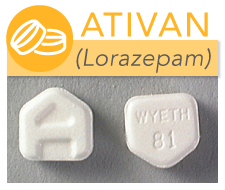 Also known as Lorazepam, Ativan is prescribed to treat anxiety; but can also be used for epilepsy and irritable bowel syndrome. It slows the brain to help a person relax, but if an excessive amount of Ativan is taken, a person can overdose. Ativan is habit forming if taken longer than prescribed or if taken in larger doses than suggested.
Also known as Lorazepam, Ativan is prescribed to treat anxiety; but can also be used for epilepsy and irritable bowel syndrome. It slows the brain to help a person relax, but if an excessive amount of Ativan is taken, a person can overdose. Ativan is habit forming if taken longer than prescribed or if taken in larger doses than suggested.
Risks Of Taking Lunesta (Eszopiclone)
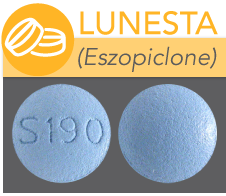 Lunesta is used to treat insomnia, and is categorized under the drug hypnotics–a person who abuses Lunesta may do so because it slows down the brain function. A user may experience hallucinations if they do not go to sleep shortly after taking Lunesta. Overdose is likely to occur if a person takes more than the recommended dose, and after a person stops taking Lunesta, they can experience withdrawals and have trouble sleeping.
Lunesta is used to treat insomnia, and is categorized under the drug hypnotics–a person who abuses Lunesta may do so because it slows down the brain function. A user may experience hallucinations if they do not go to sleep shortly after taking Lunesta. Overdose is likely to occur if a person takes more than the recommended dose, and after a person stops taking Lunesta, they can experience withdrawals and have trouble sleeping.
More On Addictive Sedatives
Sedatives are as accessible as the medicine cabinet; teens and adults alike know this. They can be highly dangerous when taken in larger doses than what’s recommended, and can cause overdose, or death. People suffering from addiction to sedatives might chew up, crush up and snort, mix with alcohol, or take more than the recommended dose of these drugs to get high. Sometimes there is little response to the warning labels on the bottle, and words like, “may cause hallucinations, drowsiness, or ability to operate machinery” spell BUZZ to a person looking to feed their addiction.
Signs Of A Sedative Addiction
Addiction can happen from illegal and legal drugs alike. A drug is a drug, whether it’s prescribed or not. Some of the signs to look for, as provided by the Department of Health and Human Services, are listed here:
- Memory Loss
- Slurred speech and a Lack of Coordination
- Dilated Pupils
- Paranoia and Suicidal Thoughts
- Aggression or Agitation
- Headaches
- Dizziness
- Depression and Fatigue
Those who become addicted to different drugs may lie to healthcare professionals about frequency of recurring pain, symptoms, and mental ability. A person suffering from addiction to sedatives might lie about the amount of the drug they are taking. When a drug is no longer available, or if a prescription runs out before a refill is due some people turn to the streets to get more. Some never have a script from a doctor and begin taking a sedative based on the simple fact it gets them high.
Treatment For Sedative Addiction
Addiction to prescription sedatives is serious, and can lead to much bigger problems like death. It affects more people than we realize. In 2010, the National Survey on Drug Use and Health revealed that approximately 2.4 million people used prescription drugs for the first time in the past year. (National Institute on Drug Abuse) Furthermore– “In 2008, more than 36,000 people died from drug overdoses, and most of these deaths were caused by prescription drugs.” (CDC) Parents, neighbors, family, and friends–Keep tabs on your prescriptions.. Sometimes addictions can happen where we least expect them.
If you have questions about your own, or a loved ones possible addiction to prescription sedatives, please call 833-473-4227 today to speak to one of our helpful staff about treatment, and get help before it’s too late.
Sources
CDC – Prescription Painkiller Overdoses
National Institutes of Health – Prescription Sedative Misuse and Abuse
National Institute on Drug Abuse – How many people abuse prescription drugs?
Department of Health and Human Services – Sedatives and Tranquilizers
U.S. Library of Medicine – Lorazepam

